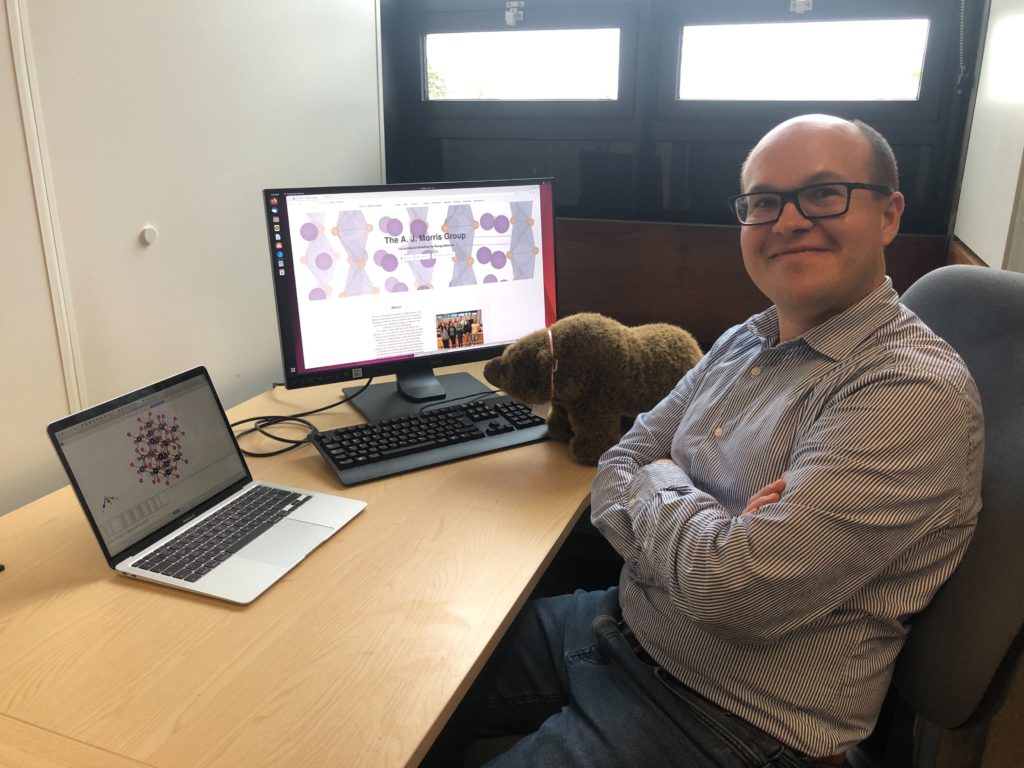Our next researcher in the #BearonTour series is Andrew Morris, Professor of Computational Physics in the School of Metallurgy and Materials. His research group uses and develops quantum mechanical techniques for predicting the structure and properties of new materials using a computer.
Andrew is also chair of the Research Computing Management Committee, a cross-college group responsible for the development and operation of all BEAR services.

Q1 – Tell me about your research
“Trial and error” plays a large part in the discovery of new materials. From the initial idea, the material must be synthesised and categorised before it can be tested which is slow, difficult and expensive. High-throughput computation accelerates this process by suggesting then screening new materials, allowing us to ask “what if?” without the time and expense of manufacturing and categorising samples. We use global search techniques such as ab initio random structure searching (AIRSS for short) to predict the ground-state electronic structure of materials. Once we have the ground state we use theoretical spectroscopy techniques to compare their results to experiment. As a junior developer of the electronic structure code of CASTEP and a member of the UK Car-Parinello consortium, I develop tools for optics, electron-energy loss spectroscopy (EELS) and core-loss analysis through the OptaDOS code. I use and modify CASTEP-NMR to calculate the chemical shielding of battery materials in collaboration with international experimentalists.
In the news! Cathode oxidation research and batteries research
Q2 – How do you use BEAR services?
We use BEAR in a variety of ways. My students use the standard BlueBEAR HPC and data storage (RDS) offering available to all UoB researchers. We have also bought extra BlueBEAR nodes from research grants, so that these projects have dedicated compute resources. We access the Tier 2 services Sulis and Baskerville to increase our computational abilities. These Tier 2s are accessible to UoB academics through a light-touch internal process. Sulis is designed for high-throughput calculations, so we use it to cover the search space of new materials. Baskerville is a GPU service, which we use to train machine learned atomic potentials which makes our calculations faster.
Q3 – What is the best thing about BEAR (apart from me)
The BEAR access model is actually the best thing about the service. Having an ecosystem of resources free at the point of use allows us to rapidly prototype new science, run exciting final year projects and give my group the opportunity to try out new computing architectures. It’s then very easy to buy more resources that seamlessly fit into that ecosystem to scale-up our research projects.

Andrew is also Chair of the Materials Simulation and Modelling Discussion Group (MSMDG), one of the BEAR Special Interest Groups, so Bear couldn’t resist a visit to see what they are up to!

Thanks to Andrew for explaining his research and inviting us to MSMDG. Please visit the A. J. Morris Group website to find out more.
Look out for our next researcher soon!
